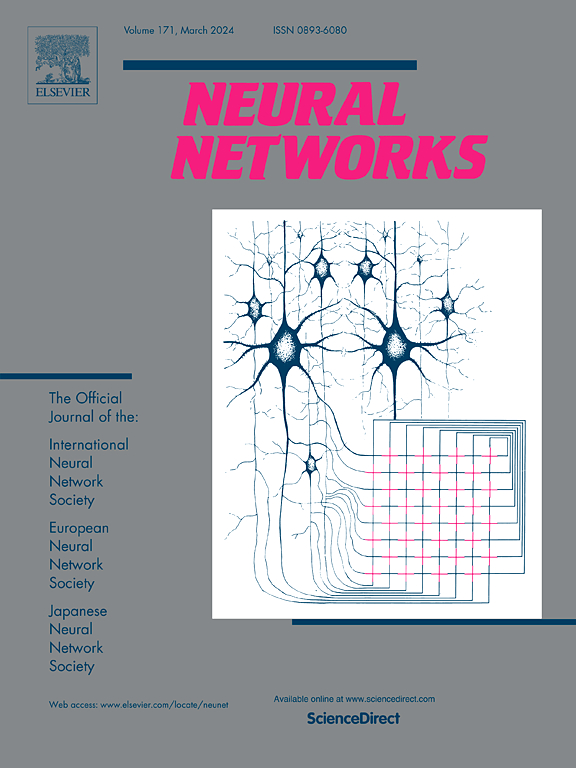Arithmetic abilities of SNP systems with astrocytes producing calcium
IF 6
1区 计算机科学
Q1 COMPUTER SCIENCE, ARTIFICIAL INTELLIGENCE
引用次数: 0
Abstract
Are the membrane systems able of performing arithmetic operations? In the last dozen years, there were published several implementations of the arithmetic operations based on membrane systems by using all available topologies (cell-like, tissue-like, or neural-like). In particular, the spiking neural P systems perform arithmetic operations by using the numbers represented in binary base. In this paper, we consider numbers represented in unary base (to each number n corresponds an object with multiplicity n), and we propose two encodings for the main arithmetic operations (addition, subtraction, multiplication and division) between numbers given in unary base: (i) for each pair of input values generate an instance of a spiking neural P system with astrocytes producing calcium with rules based on these values; (ii) generate a spiking neural P system with astrocytes producing calcium that does not depend on these values. While the second approach is commonly used in membrane computing to construct only a system for each operation, the first approach is interesting because each system is uniquely constructed based on a pair of input values , and so it performs faster the desired arithmetic operation. The main advantage (with respect to other attempts) of using any of these two approaches to perform arithmetic operations consists in the reduced size of created systems (number of locations and used rules). Additionally, we extend a semantic interpreter (in Haskell) for spiking neural P systems to test all the encodings of the arithmetic operations presented in this paper.
求助全文
约1分钟内获得全文
求助全文
来源期刊

Neural Networks
工程技术-计算机:人工智能
CiteScore
13.90
自引率
7.70%
发文量
425
审稿时长
67 days
期刊介绍:
Neural Networks is a platform that aims to foster an international community of scholars and practitioners interested in neural networks, deep learning, and other approaches to artificial intelligence and machine learning. Our journal invites submissions covering various aspects of neural networks research, from computational neuroscience and cognitive modeling to mathematical analyses and engineering applications. By providing a forum for interdisciplinary discussions between biology and technology, we aim to encourage the development of biologically-inspired artificial intelligence.
 求助内容:
求助内容: 应助结果提醒方式:
应助结果提醒方式:


